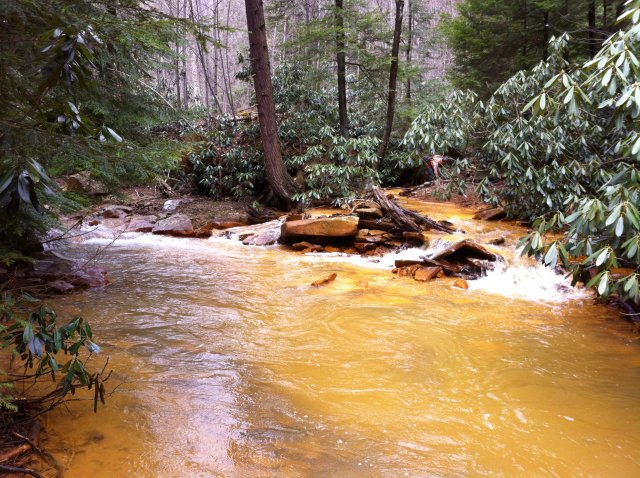Abandoned Mine Drainage
On this Page:
319 Grants Across the Country: Water Quality Improvements:
Overview
Abandoned mine drainage is water that is polluted from contact with mining activity, and normally associated with coal mining. It is a common form of water pollution in areas where mining took place in the past. There are several issues with abandoned mines that impact water quality:

- acid mine drainage (the most prevalent; see below),
- alkaline mine drainage (this typically occurs when calcite or dolomite is present),
- metal mine drainage (high levels of lead or other metals drain from these abandoned mines).
Acid mine drainage is the formation and movement of highly acidic water rich in heavy metals. This acidic water forms through the chemical reaction of surface water (rainwater, snowmelt, pond water) and shallow subsurface water with rocks that contain sulfur-bearing minerals, resulting in sulfuric acid. Heavy metals can be leached from rocks that come in contact with the acid, a process that may be substantially enhanced by bacterial action. The resulting fluids may be highly toxic and, when mixed with groundwater, surface water and soil, may have harmful effects on humans, animals and plants.
Information Resources and Centers
- U.S. Department of Interior's Office of Surface Mining
Resources, references and funding information for state and tribal professionals addressing surface mining issues. - Abandoned Mine Reclamation Pennsylvania Department of Environmental Protection -This site provides information on the chemistry of acid mine drainage and background and chemical information for passive treatment options available for acid mine drainage.
